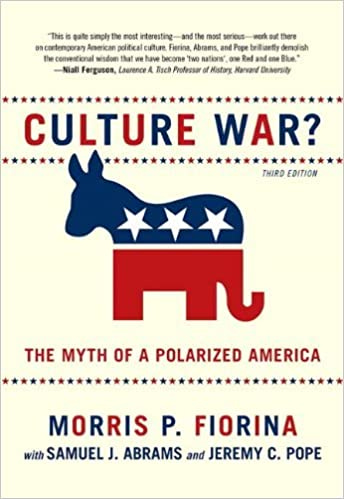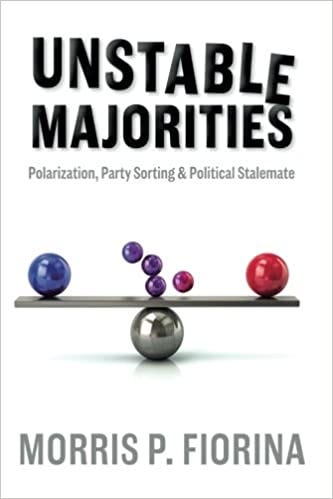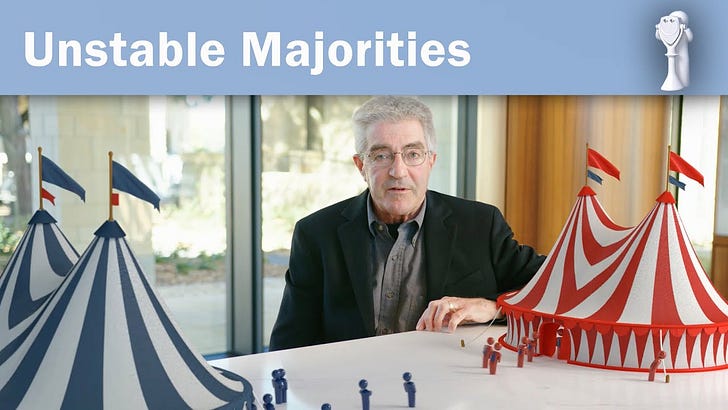Note: I wrote this article on September 1st 2019, 3 months before the British national election. However, I take pride in writing the kind of article that remains relevant over a long time, so enjoy!
The idea that we live in highly polarized, deeply divided societies is a common one today, particularly in the US and UK. And during the long period when I didn’t travel to either country, I also believed this piece of conventional wisdom; after all, the plethora of current affairs programmes with 4 to 8 boxes of talking heads screaming over each other seemed convincing.
But when I began traveling to both countries again, I began to have my doubts. I’d find myself cruising Soho (Cities of London & Westminster, Brexit vote: 72% Remain, 28% Leave) or the Westfield Mall in London (Hammersmith: 69% Remain, 31% Leave); lounging around the train station in Crewe (Crewe & Nantwich: 60% Leave, 40% Remain); gassing up at Pitlochry (Perth & North Perthshire: 60% Remain, 40 % Leave); grabbing a bite at the KFC in Ostwestry (North Shropshire: 60% Leave, 40% Remain); or admiring the thatch in Marlborough (Devises: 53% Leave, 47% Remain)[1]: and I’d think, ‘you know – these people don’t seem to be at each other’s throats, entirely polarized in their world views, and never to be reconciled.’
The picture was similar in the USA. From the freezer aisle of Trader Joe’s to the city bus to the beach, there just wasn’t the screaming and mayhem you’d expect of a country that was on the brink of civil war. Everyone, from the army family lady who sold me my fix of Auntie Anne’s pretzels in Nevada to the Black gospel congregation I had a spontaneous hymn clapping session with in New York was mainly concerned about the same things people have always been concerned about: having a job, healthcare, taxes, etc. Even the few people who I was able to work into a lather about something (and I do try), usually ended their rants with ultimatums like, ‘Former ISIS members should be placed under surveillance if they come back here! They shouldn’t be allowed on planes!’
Bear in mind that the US government prefers to simply drone execute such people, and that I (a swinging-from-the-chandeliers Liberal) wouldn’t hesitate to try them for treason, and you’ll see why I’m not as concerned as I could be about these often security-obsessed and occasionally self-admitted racist Conservatives, whose bark is so often worse than their bite.
At first, I just found this amusing, but over time, I began to realize that there’s often a fairly wide overlap of opinion on many issues, regardless of the ideology that informs any particular voter’s worldview. An American conservative might say that they oppose abortion, but would make exceptions for rape or endangering the life and health of the mother, while a liberal might say that they are pro-choice, but disapprove of late-stage abortions or a callous approach to aborting as a convenience. Regardless of how they got there, in practical terms, these positions aren’t all that far apart, meaning that politicians who take a centrist stance on this issue are probably satisfying the optimum number of voters.
Thoughts like these were circling my brain when I discovered Stanford professor Morris P. Fiorina and his books Culture War? The Myth of Polarized America and Unstable Majorities: Polarization, Party Sorting and Political Stalemate. According to Fiorina, political polarization is grossly exaggerated in the media, and he agreed to an interview with me to tease out some of the finer details.
‘The people who spread this narrative – polarization is true of them,’ he told me, speaking from Stanford’s media centre in California, ‘There’s this small group of highly politically involved, educated people on both sides of the spectrum and they dominate the blogosphere, they dominate the Twitterverse, they show up on cable television shows and they are polarized. They do in many cases hate each other. But the idea that this is typical or that this represents the typical American voter is just simply wrong.’
Fiorina sees polarization among elites as a key reason behind parties’ inability to appeal to a wide cross-section of voters and attain decisive electoral victories, pointing out that in the past it has been a common pattern of many Western nations for one ‘big tent’ party to dominate politics for prolonged periods of time. One could think of the Liberal Party of Canada, which spent only sixteen years out of government between 1935 and 2006; the CDU-led German governments from 1982-1998 and 2005-the present; or the long-chain of Republican US Presidents from 1897-1933 (broken only by Woodrow Wilson), and followed by Democrats Franklin D Roosevelt and Harry S Truman from 1933-1953.
Check out the professor’s awesome video on big tent politics:
According to Fiorina, a key factor preventing such stability from arising in political institutions in the USA today is that rather than realigning and addressing modern voters’ concerns, politicians and activists are instead waging a war of attrition on non-core political issues that most people find irrelevant to their lives and therefore tune out. Rather than succumbing to mind-numbingly repeated slogans and core messages, many Americans simply ignore them.
Having read research attesting the contrary, I pressed Fiorina on this, and while he admitted that some experiments had demonstrated the power of media messaging to influence perceptions, he also asserted that these experiments had been conducted under laboratory conditions that don’t stack up in the real world.
‘If we could lock all Americans up and force half of them to watch Fox News three hours a day and the other half to watch MSNBC three hours a day and test them on what they absorbed, yes, you’d get an effect. But that’s not the way people watch news. Most of the studies on news-watching conclude that most people just don’t watch it very much at all, and they’re more heterogenous in their watching habits. The notion that people are isolating themselves in ideological silos turns out to have very little empirical basis.’
Thus, while politicians, journalists and academics may be marching in lockstep with their own ‘side’ on what they have decided are the issues of the day, the average person hasn’t been carried along with this ideological purism. There are still many people who hold less streamlined views, like Blue Labour, ‘small c’ conservatives or RINOs (Republicans in Name Only) – but they now rarely occupy prominent public positions.
This is an issue, as such ideological misfits have often played important roles in formulating pragmatic policy in the past.
Growing up in Canada in the 1980s, when I thought of a politician, I tended to think of someone who was good at articulating themselves and willing to live in the limelight, but they were, like the average person, not always easy to categorize. In fact, they often possessed rather unusual characters that cut across conventional expectations. Canada’s ‘socialist’ healthcare system, for example, was the magnum opus of a rural, bible-thumping Baptist preacher, while Conservative PM John Diefenbaker (nicknamed ‘Dief the Chief’ for his aggressive leadership style) was an early opponent of apartheid in South Africa, appointed the first female Cabinet minister and first person of Native ancestry to the Senate, and began the work of creating a Canadian Bill of Rights. By contrast, Pierre Trudeau, arguably one of the country’s most liberal Prime Ministers, instituted martial law after a French separatist group killed provincial Labour Minister Pierre Laporte, and arrested more than 400 people in order to get hold of a mere handful of perpetrators. When a reporter told him that he could not take such drastic measures, an autocratic Trudeau responded ‘Just watch me.’ He also goofed off by pirouetting behind the Queen’s back on a state trip to England, and told people who annoyed him in the House of Commons to F- off, later transliterated by a smirking Trudeau into ‘fuddle-duddle’ in a television interview (young Canadians went out and bought ‘fuddle-duddle’ t-shirts). Our next liberal prime minister Jean Chretien went into self-defence mode wielding an Inuit statue against a would-be assassin in his home and throttled – with astonishing professionality – a protestor who jumped out at him from a crowd.
Here’s the same Prime Minister who said that ‘there’s no place for the State in the bedrooms of the nation’ telling ‘bleeding hearts’ who ‘don’t like to see helmets and guns’ to ‘go on and bleed’.
Most of these politicians enjoy iconic status in Canada’s political history, frequently contending for ‘top Canadians’. But one of the big reasons they are so iconic is that they were interesting individuals, not dogmatic soldiers for a cause.
As a result, they could be somewhat more in tune with the average constituent, who may care about the environment, but also enjoy the fun of driving a Tesla in Ludicrous Mode, or believe that democracy is important but not equate something like proroguing the British parliament with an actual coup.
When we look at media we see, according to Fiorina, ‘a bunch of overeducated, sanctimonious know-it-alls duelling with each other on these tiny little social media outlets and it gives the impression of a politics which is just totally out of whack… As Shakespeare wrote in Macbeth: sound and fury, signifying nothing.’
And I am inclined to agree with him. The Twitterverse may be melting down in a McLuhanesque demonstration of new tribalism, but outside those spheres, few people ditch their friends or get divorced over politics. And dogmatic positions on the lines of ‘If you are for multiculturalism you must be against border control’ or ‘If you value education, you can’t permit student fees’ are bound to be met by constituents with a simple ‘Watch me’.
Rather than the militant ideologue, politics tends either to the ‘blank sheet’ style of politician, who can showcase diplomatic and rhetorical skills, while remaining somewhat less zealous on the content of single issues, or the rare person who possesses a strong personality but manages to straddle a slew of technically contradictory positions, reacting pragmatically rather than idealistically to challenges.
There are a few candidates in the American Democratic primaries who could fill that void – Andrew Yang with his ‘Not Left, Not Right – Forward’ message or the Progressive but not too Progressive Buttigieg, and – at a stretch – the socialist but appealingly down-to-earth Bernie.
British politics is a bit more difficult. One photo of Conservative Jacob Rees-Mogg is enough to give anyone vaguely progressive the shudders, and activists have been pushing hard to shift Corbyn’s Labour Party into harder stances around Brexit and identity politics than most of their voters can likely bear.[2] The party is at its strongest when it keeps its messaging to bread-and-butter issues like affordable housing and stable jobs and maintaining a moderate tone on Brexit, but it’s a position some of its more screechy media supporters seem determined to kick it out of in the interests of what they believe to be the moral high ground.
Big parties often complain that voters aren’t as enthused about them as they should be, but they’ve done a pretty good job of taking themselves off the menu by focusing on the idealistic, rather than the pragmatic. While a lot has been said about the ills of populism, it would seem that modern voters are not so much occupying an extremist position on the fringes of the major parties, but rather the gap they have left in the centre.
Here are the books:


[1] figures rounded from Prof. Chris Hanretty’s final estimates of constituency votes: https://medium.com/@chrishanretty/final-estimates-of-the-leave-vote-or-areal-interpolation-and-the-uks-referendum-on-eu-membership-5490b6cab878
[2] In hindsight, let me say: Wow – was I right about this.


